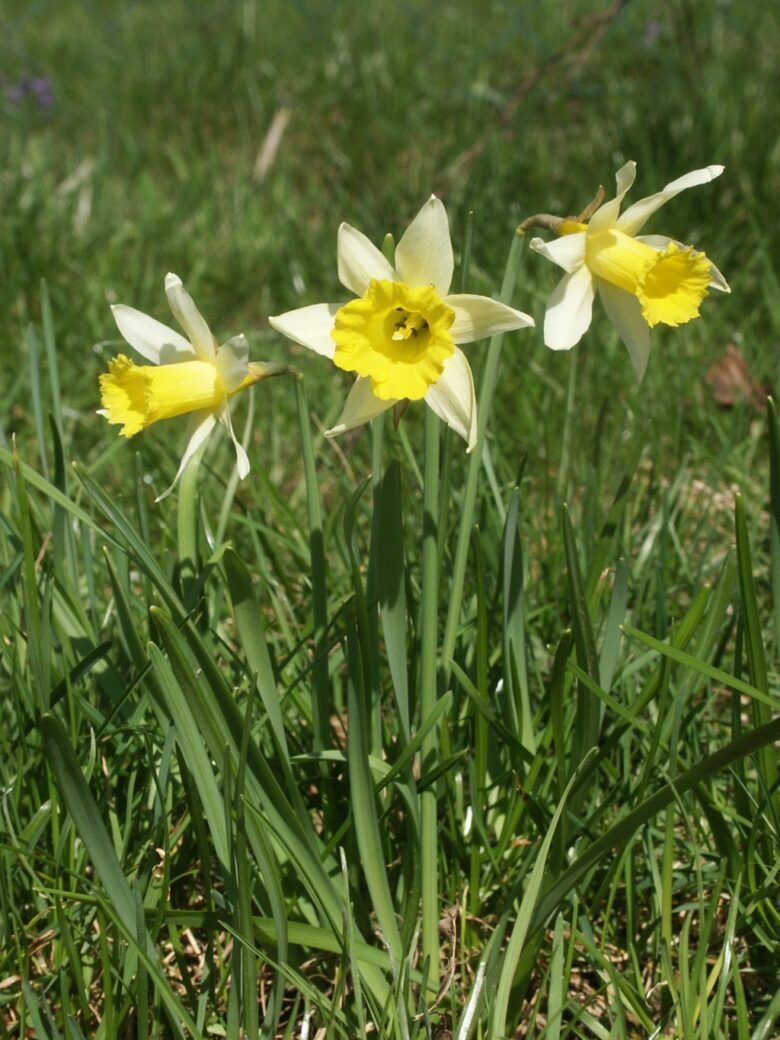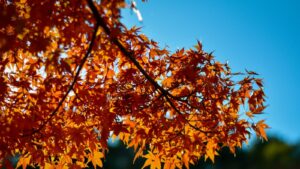Welcome, curious readers, to the world of daffodils. Did you know that these bright and cheery flowers have a rich cultural history? In this article, we will delve into the folklore, traditions, and legends surrounding daffodils and explore how they have impacted different cultures around the world. Discover the secrets of this beloved flower and how it continues to hold significance in our lives.
What Are Daffodils?
Daffodils are a type of spring-blooming flower known for their vibrant yellow petals and trumpet-shaped centers. Belonging to the Amaryllidaceae family, they are native to Europe, North Africa, and Asia. These flowers typically grow from bulbs and come in various sizes, colors, and shapes. Symbolizing rebirth, new beginnings, and hope, daffodils are highly regarded in many cultures and often associated with festivals and celebrations during the spring season. They are commonly used in floral arrangements or planted in gardens to bring joy and beauty.
Now, let me share a true story about daffodils. In a small town in Wales, during a cold winter, the community was pleasantly surprised to find daffodils blooming early, bringing a sense of hope and happiness.
What is the Cultural Significance of Daffodils?
Daffodils hold great cultural significance and symbolism in various traditions and folklore. They are often tied to the ideas of renewal, rebirth, and the arrival of spring. In many cultures, daffodils are seen as a symbol of hope, positivity, and new beginnings. They are also associated with special occasions like Easter and the Persian New Year.
In literature and art, daffodils have been portrayed as a source of inspiration and a representation of beauty and vitality. Their bright yellow hue and delicate appearance make them a beloved flower in gardens and floral arrangements. Embrace the joy and optimism that daffodils bring by incorporating them into your own traditions and celebrations.
How Have Daffodils Been Used in Folklore?
Daffodils have a rich history in folklore and have been associated with various myths and beliefs. Here are some ways daffodils have been used in folklore:
- In Greek mythology, it was believed that daffodils grew in the Elysian Fields, the final resting place of heroic and virtuous souls.
- In Welsh folklore, it is said that spotting the first daffodil of the year will bring wealth and good fortune for the next twelve months.
- Ancient Persian culture viewed daffodils as a symbol of new beginnings and rebirth.
- In English folklore, stepping on a daffodil was believed to bring bad luck.
- In some Irish folklore, daffodils were associated with fairies and were believed to bring luck and protection if planted near one’s home.
If you are interested in learning more about the folklore surrounding daffodils, you can explore books on mythology, folk tales, and cultural traditions.
What Traditions Surround Daffodils?
Daffodils hold significant cultural traditions in many parts of the world. These traditions typically revolve around the arrival of spring and the symbolism of rebirth and new beginnings.
For instance, in Wales, the daffodil is the national flower and is closely associated with St. David’s Day, celebrated on March 1st. It is customary to wear a daffodil on this day as a symbol of Welsh pride. In the United States, various states hold daffodil festivals to celebrate the arrival of spring and showcase the beauty of these flowers. These traditions foster a sense of community and happiness as people come together to appreciate the beauty and meaning of daffodils.
A true example of this is a small town in England that hosts an annual daffodil parade. Locals decorate floats and dress up in daffodil-themed costumes for the parade, attracting visitors from all over the country and boosting tourism in the town. This tradition not only celebrates the splendor of daffodils but also supports the local economy and strengthens community ties.
What Legends Are Associated with Daffodils?
Legends associated with daffodils add to their cultural significance. One well-known legend involves a Greek myth about a young man named Narcissus, who fell in love with his own reflection in a pool of water and transformed into a daffodil. This story symbolizes the importance of self-love and the dangers of vanity.
In another legend, daffodils are believed to bring good luck and prosperity. It is said that if you spot the first daffodil of the season, your year will be filled with good fortune. These captivating legends only enhance the enchanting allure of daffodils.
How Have Daffodils Been Used in Art and Literature?
Daffodils have been a popular subject in art and literature for centuries, symbolizing various themes and emotions. Here are some ways daffodils have been creatively used:
- Visual art: Artists like Vincent van Gogh and William Wordsworth have depicted daffodils in their paintings, capturing their vibrant colors and delicate beauty.
- Poetry: William Wordsworth’s famous poem “I Wandered Lonely as a Cloud” describes the joy and inspiration he felt upon seeing a field of daffodils, showcasing their ability to evoke a sense of wonder and happiness.
- Symbolism: Daffodils have long been a symbol of renewal, rebirth, and hope in literature, representing the arrival of spring and the promise of new beginnings.
- Metaphor: Daffodils can also be used metaphorically to convey deeper meanings, such as personal growth, resilience, and the power of nature.
What Famous Poems Feature Daffodils?
Some notable poems that prominently feature daffodils are William Wordsworth’s “I Wandered Lonely as a Cloud” and Robert Herrick’s “To Daffodils.”
In Wordsworth’s poem, he describes stumbling upon a field of daffodils and how the sight brings him immense joy and comfort.
Herrick’s poem captures the fleeting beauty of daffodils and encourages readers to appreciate them while they last.
These poems beautifully showcase the aesthetic and symbolic significance of daffodils in literature.
Interestingly, daffodils are also known for their resilience in harsh weather conditions, making them a symbol of perseverance and hope.
How Have Daffodils Been Depicted in Art?
Daffodils have been a popular subject in art throughout history. Artists have depicted daffodils in various ways, showcasing their vibrant yellow color and delicate shape. Here are some ways daffodils have been depicted in art:
- Still Life Paintings: Daffodils are often featured in still life paintings, where they are arranged in vases or displayed in natural settings.
- Botanical Illustrations: Daffodils have been meticulously depicted in botanical illustrations, showcasing their intricate details and various varieties.
- Landscape Paintings: Daffodils can be seen in landscape paintings, adding a touch of color and beauty to meadows, gardens, and fields.
- Symbolism: Daffodils have been used as symbols of rebirth, renewal, and springtime in different artworks, representing hope and new beginnings.
- Impressionism: Daffodils have been captured in an impressionistic style, focusing on their vibrant color and capturing the play of light and shadows.
What Are the Medicinal and Culinary Uses of Daffodils?
Daffodils have been utilized for various medicinal and culinary purposes throughout history. When it comes to medicine, daffodils contain alkaloids that may have anti-cancer properties. However, it is important to note that daffodils are toxic and should not be consumed without professional guidance.
While there are limited culinary uses for daffodils, some chefs have experimented with incorporating the flowers into salads, soups, and desserts for their vibrant color and subtle flavor. Despite their limited culinary uses, daffodils remain beloved for their beauty and symbolism of hope and renewal in many cultures.
Fun fact: In ancient Persia, daffodils were believed to possess healing powers and were commonly used in traditional medicine to treat various ailments.
How Have Daffodils Been Used in Traditional Medicine?
Daffodils have a long history of being used in traditional medicine for their medicinal properties. Here are some of the ways they have been utilized:
- As a diuretic: Daffodil extracts have been traditionally used to increase urine production and treat conditions such as edema and urinary tract infections.
- For respiratory ailments: Daffodils have been used to alleviate symptoms of asthma, cough, and congestion.
- As a topical treatment: Daffodil extracts have been applied to wounds, burns, and skin infections for their healing properties.
- For pain relief: Daffodils have been used as an analgesic to ease headaches and menstrual cramps.
- For cardiovascular health: Daffodil compounds have been studied for their potential to lower blood pressure and cholesterol levels.
Pro-tip: It is important to consult a healthcare professional before using daffodils for medicinal purposes, as they can be toxic if consumed improperly.
What Culinary Delights Can Be Made with Daffodils?
Daffodils, while visually appealing, should not be consumed as they are highly toxic. However, their bulbs can be utilized to create a unique and delicious culinary delight known as daffodil cake. This cake involves grinding dried daffodil bulbs into a fine powder and incorporating it into the batter. The resulting cake has a distinct flavor that is both floral and slightly bitter. It is important to note that only specific varieties of daffodils should be used for culinary purposes, and it is crucial to follow a trusted recipe.
Pro-tip: Always consult a reputable source and exercise caution when incorporating daffodils into your cooking.
What Are the Different Types of Daffodils?
Daffodils are available in a wide range of types, each with its own distinctive characteristics and charm. Some of the most popular types include:
- Trumpet Daffodils: These feature a large central trumpet-shaped corona that is equal to or longer than the surrounding petals.
- Double Daffodils: These have multiple layers of petals, creating a fuller and more ruffled appearance.
- Miniature Daffodils: These are smaller in size, with delicate flowers that add a charming touch to gardens and floral arrangements.
- Split-Corona Daffodils: These have a split and backward-folded corona, resulting in a visually striking and unique appearance.
- Poeticus Daffodils: These have white petals and a small, flattened corona with a distinct red or yellow rim.
With such a diverse range of types, daffodils offer countless opportunities to enhance the beauty and color of gardens and landscapes.
How Many Varieties of Daffodils Exist?
There is a vast array of daffodils available, with varying shapes, sizes, and colors. To determine the number of daffodil varieties in existence, follow these steps:
- Refer to a reputable daffodil catalog or website.
- Explore different daffodil collections and nurseries.
- Consider regional and local variations in daffodil varieties.
- Attend daffodil shows or exhibitions to see a diverse range of daffodil varieties.
- Connect with daffodil enthusiasts or societies who possess extensive knowledge of daffodil varieties.
Fact: There are over 13,000 registered daffodil varieties, showcasing the incredible diversity of this beloved flower.
What Are the Characteristics of Different Types of Daffodils?
Daffodils come in a variety of types, each with its own unique characteristics. Some of the most common varieties include:
- trumpet daffodils, which feature a large central trumpet-shaped corona
- double daffodils, which boast multiple layers of petals
- miniature daffodils, which are smaller in size
- poeticus daffodils, which are known for their distinct red-rimmed yellow cups
- split-corona daffodils, which have a split or frilled cup
- jonquilla daffodils, which have small flowers with a strong fragrance
The characteristics of different daffodil types vary in terms of flower color, size, shape, and fragrance, adding to the diversity and beauty of these flowers.
Frequently Asked Questions
What is the cultural significance of daffodils?
Daffodils hold a special place in many cultures and traditions around the world. They are often associated with rebirth, new beginnings, and hope.
What are some folklore and legends surrounding daffodils?
In Greek mythology, daffodils are said to have sprung up from the ground where Persephone’s tears fell as she was carried away to the underworld. In Welsh folklore, daffodils are believed to bring good luck and prosperity.
What traditions involve daffodils?
Daffodils are commonly used in traditional spring celebrations, such as the Persian New Year and St. David’s Day in Wales. They are also often used as a symbol of hope and remembrance during cancer awareness events.
How have daffodils been depicted in art and literature?
Daffodils have been a popular subject in art and literature for centuries. Perhaps the most famous example is William Wordsworth’s poem “I Wandered Lonely as a Cloud,” also known as “Daffodils.”
What cultural meanings are associated with different colors of daffodils?
In general, yellow daffodils represent joy and happiness, while white daffodils symbolize purity and innocence. Some cultures also associate different colors with specific meanings, such as red for passion and pink for friendship.
Are there any cultural events or festivals dedicated to daffodils?
Yes, there are several events and festivals around the world that celebrate daffodils. The Nantucket Daffodil Festival in Massachusetts, USA, and the Daffodil Festival in Gloucester, England are just a few examples. These events often include parades, competitions, and other activities centered around daffodils.



